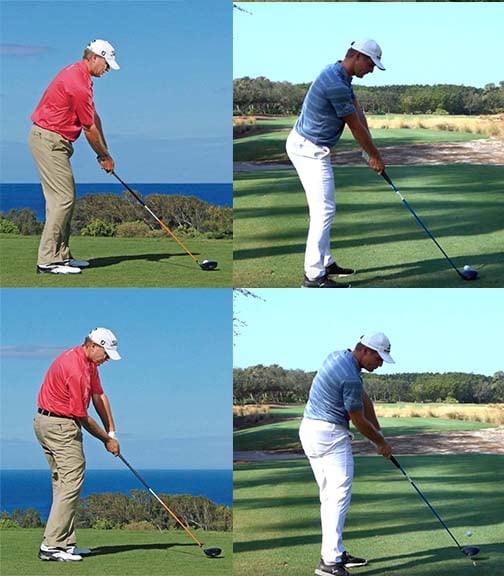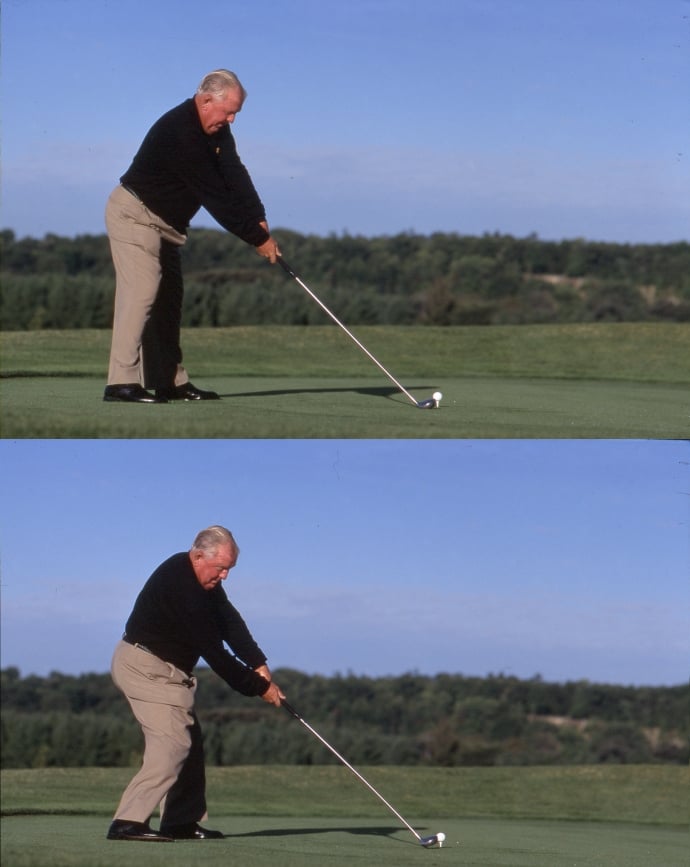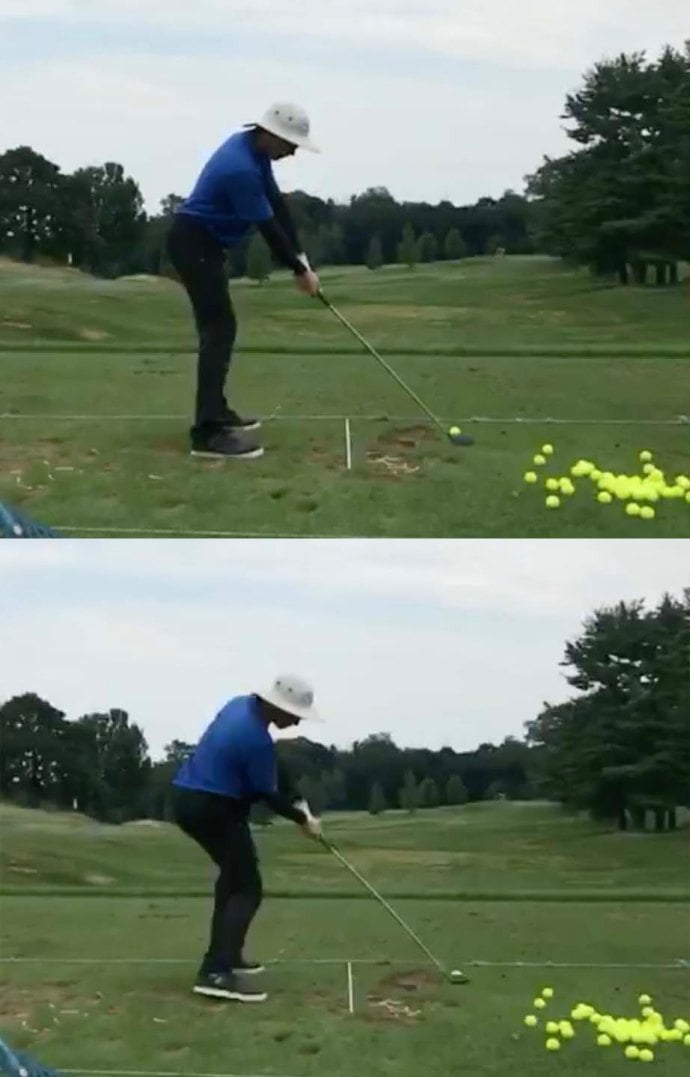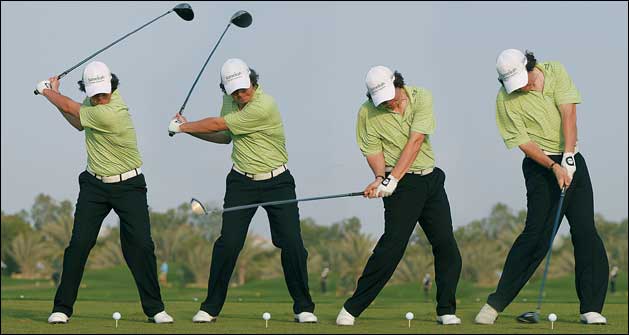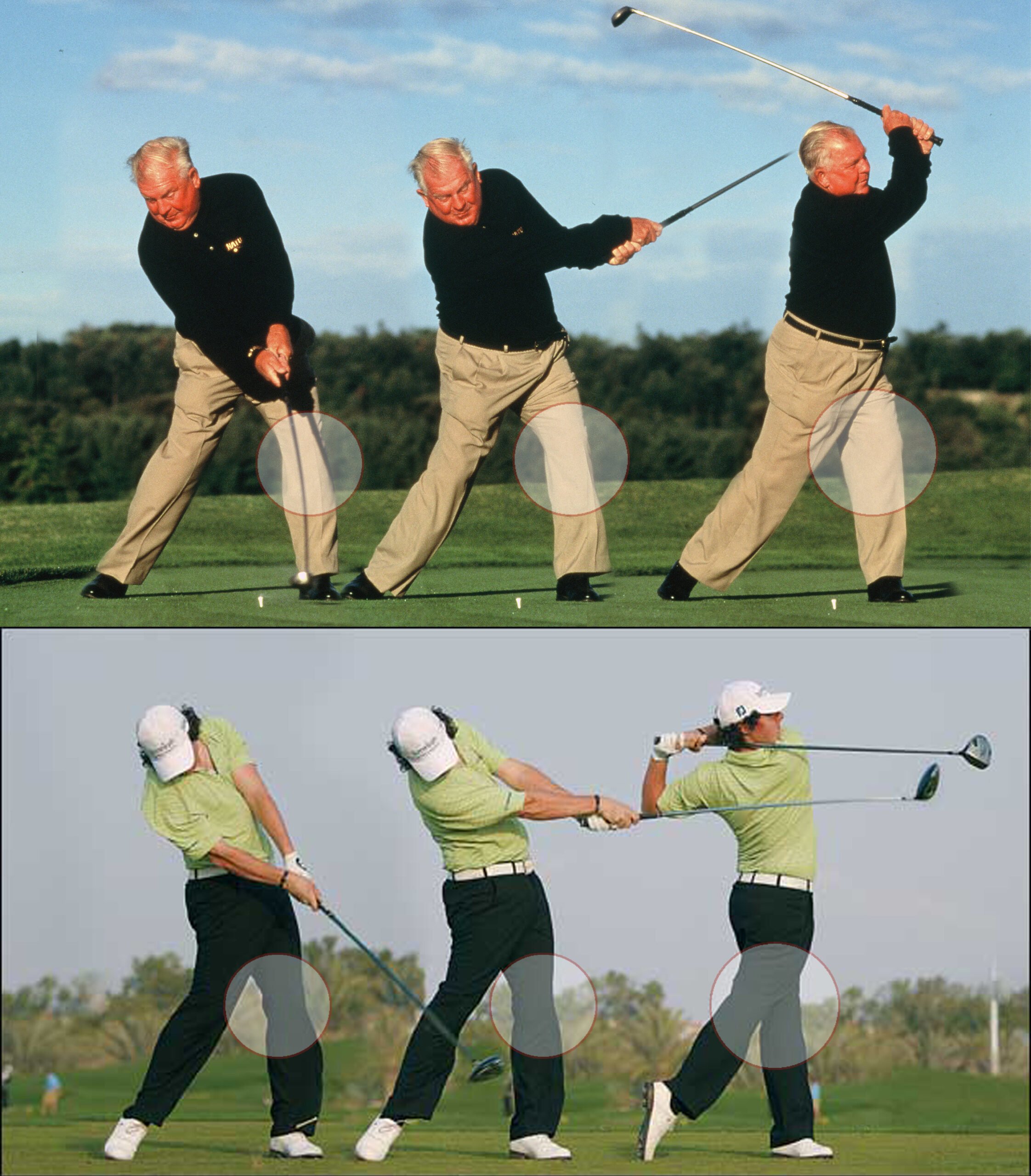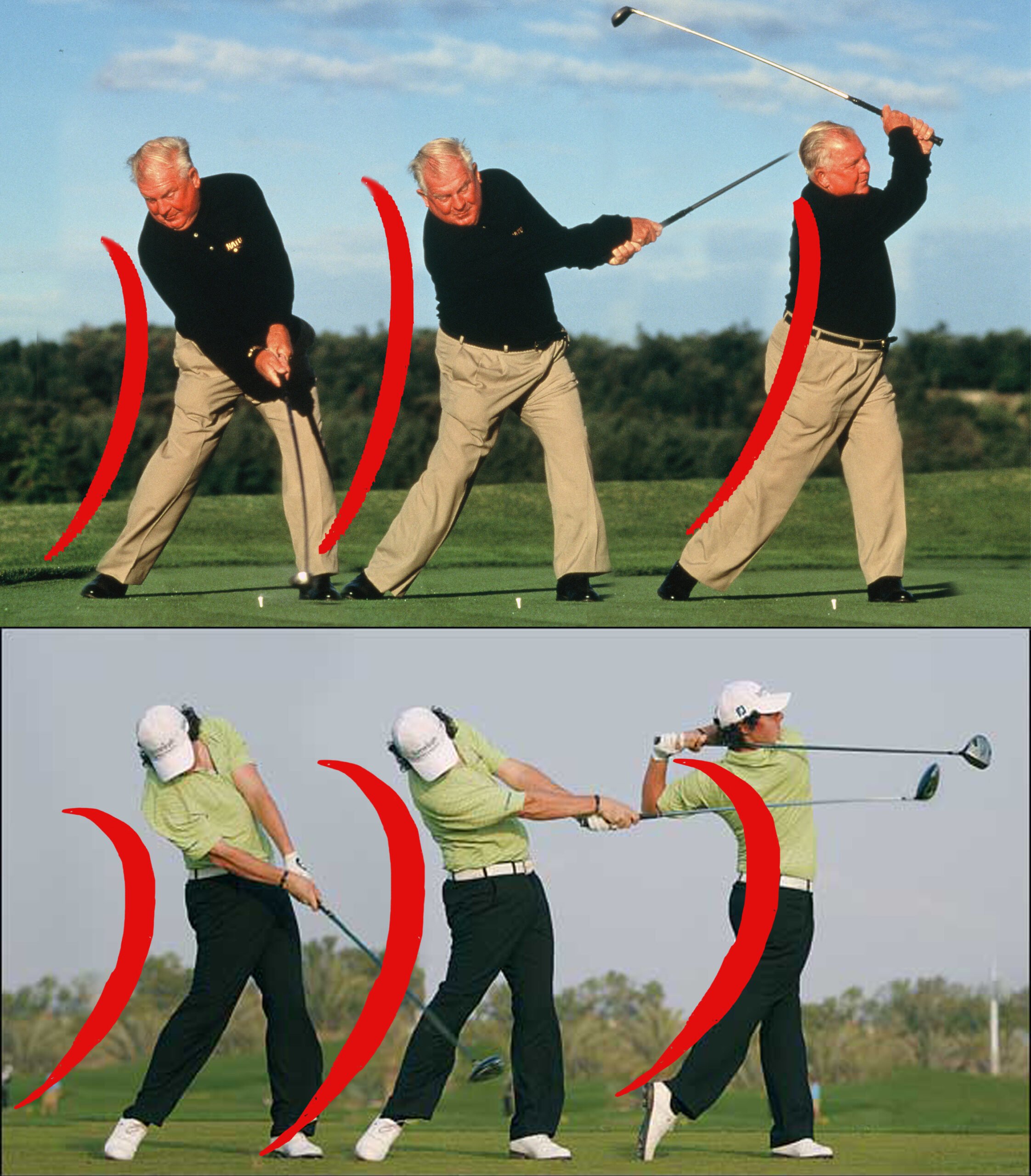I’ve taught thousands of students the Single Plane Swing of Moe Norman. One thing that is consistently true about learning Moe’s swing is the importance of the Address position. Moe was right when he said:
“If you haven’t got a good address position, you haven’t got anything”.
– Moe Norman
Moe also said, “give yourself a chance“.
As I continue to research the swing, Moe’s comment is glaringly more exact. Why? Mostly because the effects of a bad address are now measurable. I can quantify the mistakes and find the causes. Many times the reasons are at the beginning of the swing – address position.
I hope that this article will help you understand that you must consistently check your address position. There are quite a few elements to it including the alignment of the feet, hand position, arm and leg position, spine tilt and bend and rotation. It can quickly get off track.
As usual, I don’t mean to overanalyze the address. It’s very simple. As I always say, just model Moe. But even modeling Moe can be tricky – because what you see can be deceiving. What you see is not still what you feel. Take for example the tilt and bend of the spine.
There are two tilts of the spine, the forward angle which is toward the golf ball and the side bend, which is the tilt away from the target. The trick is that you must have both inclinations to position the shoulders correctly so the arms can extend in the proper position.
Here is a picture of Moe at address – side bend (away from the target) is 20 degrees.
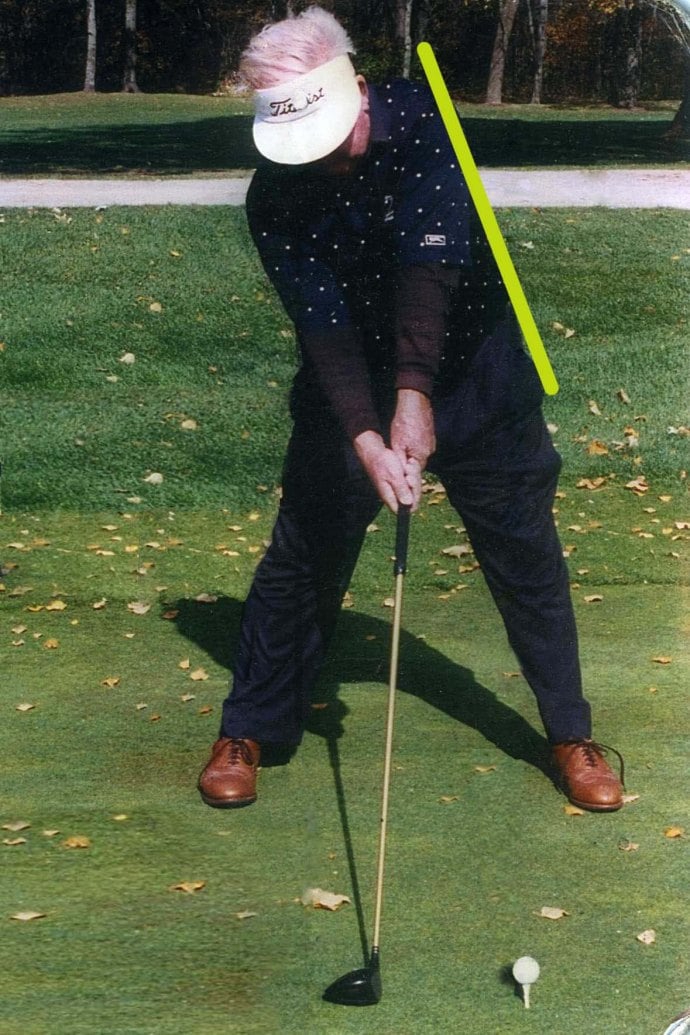
In my opinion, the side bend is the most difficult to feel and accomplish because it is entirely contrary to the conventional address position of having your arms hanging below your shoulders. With the proper side bend, you need a few other elements including the first foot rotation and trail leg braced.
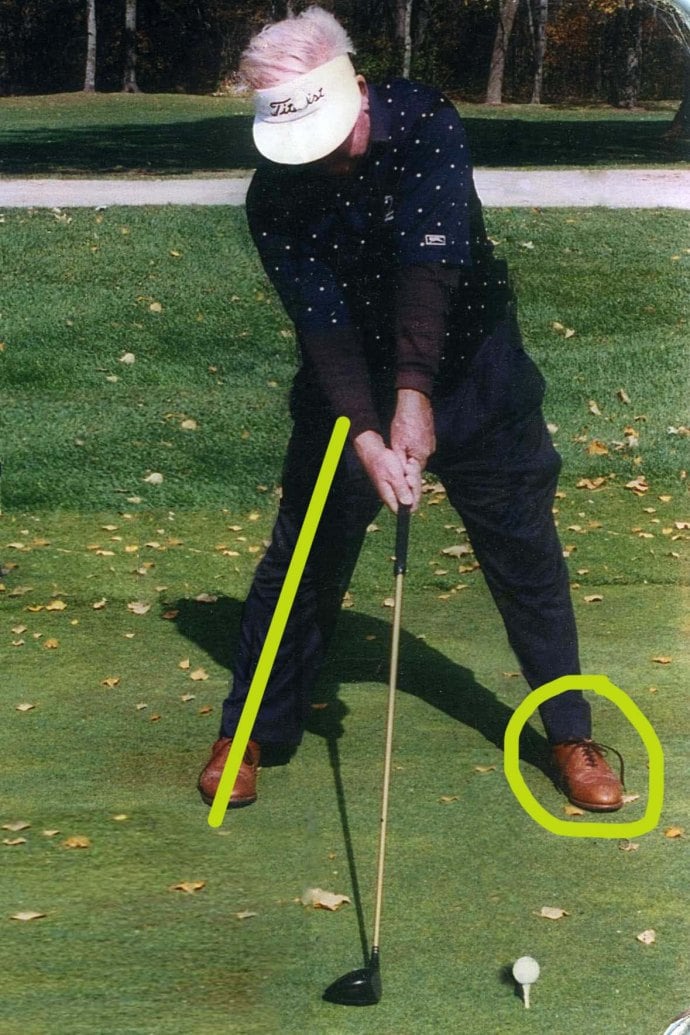
Once you have the lead foot and trail leg in position, you can quickly align the club and first arm.

In many ways, the grip is a function of this address position. When you have the body in the proper side-bend, the lead holder lifts. This raises the first arm. When you grip the club, the arm is higher and rotated, aligning the back of the hand and wrist to the target. The trail shoulder is lower. When you lift the side to the club, it is rotated under the organization – creating an alignment to the single plane where the trailing arm aligns with the shaft.
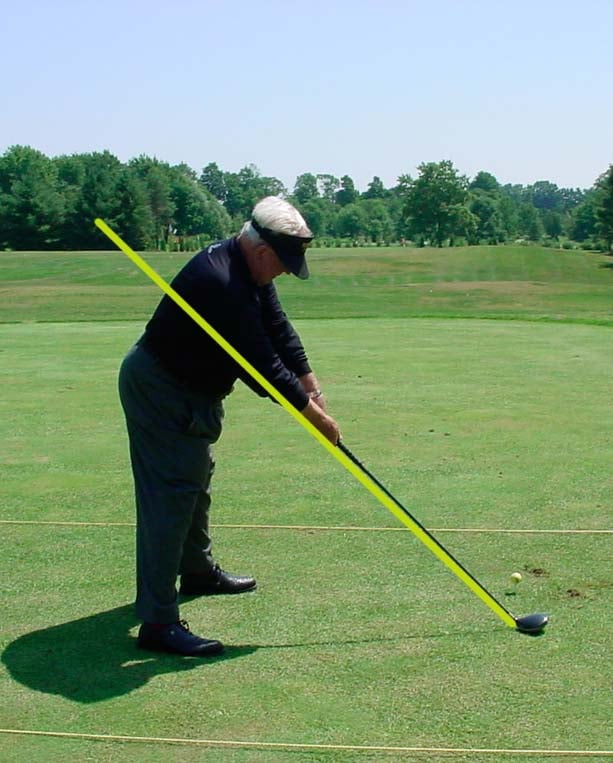
You can see in the Down-the-line view what Moe’s legs are straight. His lead arm is higher than his trail arm – both essential variables to the ideal Single Plane Swing.
In this position, the shoulders appear to be “closed” or pointing to the right of his feet line. In actuality, his shoulders are open at address.
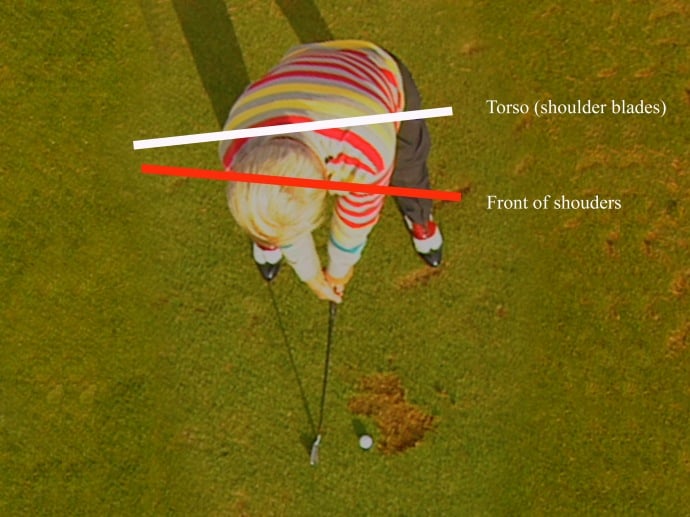
The fact that his body is open at speech is significant. At address, Moe’s shoulders are approximately 15 degrees open. When he rotates to the top of the backswing, he will turn about 65 degrees. Making the total turn 80 degrees. Why is this important?
When Moe returns to impact, his shoulders and hips will be 35 degrees open – 20 degrees more than at address. By opening the shoulders through impact, the hands can lead – give the club speed and proper angles into the ball to create compression.
My suggestion is that you consistently monitor and check your address position in a mirror or by using video. The address position sets up the golf swing, and as Moe mentioned, without it, you don’t have a chance.
